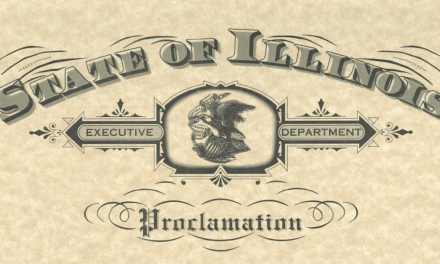
New Rules Regarding Non-Compete Clauses and Contracts
On January 1, 2022, a new law went into effect regarding non-compete clauses in employment contracts. Watch the video to learn more!
Additional Information
- Review Your Employment Agreement Forms: Starting January 1, 2022, New Law Restricts Non-Competition and Non-Solicitation Clauses
- Physician Non-Compete Update: What’s Enforceable in Employment Agreements?
Transcript:
If you didn’t see our article that we published a few weeks ago surrounding non-compete clauses in contracts, then I want to bring you up to speed on some changes that began at the beginning of 2022. So January 1, 2022, a new law came into play, that changes how we look at and what some of the requirements are in regard to non-compete clauses inside of contracts. So here’s what it ultimately comes down to. If you’re signing up a new employer, you’re adding a new contract with someone even if they’re already an employee that has a Covenant Not to Compete, or a non-solicitation agreement within that contract, both of those now have new rules according to the Illinois law.
First of all, it’s this in order to have a non-solicitation agreement. In other words, in order to prevent an employee from leaving and soliciting your current patients, or whatever the case might be, their salary must be at least $45,000, and that’s a year. So you have to start at that now, there’s some additional thresholds and other considerations that have to be taken into consideration. But, that’s first, so non-solicitation is 45,000. This is an important one, non-compete clauses, the employee must be making at least $75,000 a year, in order for a non-compete clause to be enforceable at all. So you shouldn’t include it. If the salary of an associate physician is less than $75,000 a year, there shouldn’t be a non-compete clause built in at all, because it would not be enforceable, according to the new Illinois law that came into play at the beginning of the year.
Additionally, there are a couple of other caveats and we’re going to try to walk through those pretty quickly in a short video here. One is if for some reason, an employee, even if they have a restrictive covenant built in and even with all meeting all of the requirements, if an employee is laid off due to COVID, and by the way, that’s any reason surrounding COVID, whether it’s less business, related to, you know, government action, or whatever the case might be. Obviously, this is going to be less impacting today, than it would have been, of course, you know, 18 months ago, for example. But if you lay someone off due to COVID, then your non-solicitation non-compete clauses would be unenforceable.
Now, there are some other things that have to happen. And as you’re working through that contract process, there are two additional requirements. One is that the employee must be given written notice that there is a non-compete clause in the contract, and to tell them to consult with an attorney to review that. Now, we have a form that’s available for members, you can jump on, take a look at the article search compete and look at the 2022 law changes, article that’s going to be important, it’s good, and also provide you that easily downloadable and editable document that can help you meet this requirement and the next one, which is that you have to give them and present them with that contract at least 14 days in advance. That form will help you wrap up both of those things. So one, you got to present them with a contract at least 14 days prior to the signing. And second, you have to notify them that they should be seeking. They should be seeking an attorney’s counsel in regard to the non-compete or non-solicitation agreements that are contained within that contract.
What else comes into play with this and these discussions? There are some threshold requirements, in other words, there are some things that have to be done in order really to meet the letter of this new law, and here’s what it ultimately comes down to. So, adequate consideration, and it’s an interesting provision that really comes into play for a couple of different ways. One is, if somebody has been with you at least two years, then that would be considered adequate consideration. But if it’s less than two years, and there’s a non-compete or non-solicitation, then you have to consider a lot of things, and the courts usually weigh in on this. Now if you want more information on that, we have an article from 2019 that walks through a whole bunch of court cases that will explain to you more what adequate consideration and what they consider adequate consideration in these particular deals. But that is a threshold requirement that’s built into this law. So you have to be careful though, you also have to make sure that the arrangement is with a bonafide employee. If you have an independent contractor and you have a non-compete clause with that independent contractor, we could say that this law doesn’t apply. However, if you try to exercise it, they could come I can say because of that level of control, that I should have been classified as an employee. So there is some interesting dynamics that can happen there. And so we just encourage you to seek some legal counsel in that regard if you’re looking to tack on non-compete or non-solicitation agreements with an independent contractor, because of the IRS and implications of a misclassification, those can be incredibly costly to employers. So be careful in that regard.
Now, additionally, you have to only restrict to what is considered to be to reasonably protect legitimate business interests of the employer. So you can’t put provisions in play in these particular types of agreements, that would be further restricting than just simply to, you know, or then that would only be necessary to protect your business interests, so they can’t expand, and that’s really important, you have to be careful in there, again, seek counsel. Also, you can look at the 2019 article, and it walks through some of those and some of the court cases as well. So use that 2019 article, and you can find that on the website by searching compete, that’s going to be the fastest way to do it, and you’ll see that there are a lot of court cases that have come into play and can help you with both the adequate consideration as well as the legitimate business interest portion of the law as well.
Two other things that we got to touch on one does, it can’t create undue hardship for the employee. So if it puts an employee in a position where there’s just no way they can make a living unless they were within the confines of what would typically restrict them from practicing in a particular area due to Covenant Not to Compete, and it puts undue hardship, and the courts can weigh in on that as well, and that can be problematic. Lastly, it can’t create kind of, it can’t create injury to the public. And there are some really good examples here. And I think the best example would be, say, in a rural situation, right, where you got a small town, a lot of people come into town, maybe for breakfast, or whatever else on a regular basis. And, so the small rural community relies on that town, to be able to provide the services, and ultimately by restricting someone from practicing in that town, or even in the immediate vicinity, potentially could create a problem where there isn’t enough service, there isn’t enough health care service for that particular rural community in order to serve the community and thus, then the public is harmed. So those are also additional factors, and threshold requirements, as you kind of look at all of these things that have to be considered when you create these competes, or these non-compete clauses.
So two biggest factors that matter the very most, so don’t ignore those thresholds that we talked about. And don’t ignore the required elements of notification, but are $75,000 for non-compete and $45,000 for non-solicitation, both of those thresholds have to be met. And each one of those cases in order to add that to the contract or for it to be enforceable in a contract. Hopefully, this gives you what you need some help check out the form. Check out the article if you want a more in-depth explanation, and we will catch you next week.

















